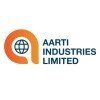

ARCADIS




30+ ARCADIS Interview Questions and Answers
Q1. Have you dealt with Treatment plant equipments like screens, grit, macerator, sludge handling equipment etc.
Yes, I have experience dealing with treatment plant equipment such as screens, grit, macerator, and sludge handling equipment.
I have worked on various projects involving the installation and maintenance of treatment plant equipment.
I am familiar with the operation and troubleshooting of screens used for removing large debris from wastewater.
I have experience with grit removal systems that separate sand, gravel, and other heavy particles from wastewater.
I have worked with mace...read more

Q2. which pipe material is good for NaCl 2500 ppm fluid and why?
Duplex stainless steel is good for NaCl 2500 ppm fluid due to its high corrosion resistance and strength.
Duplex stainless steel has a high resistance to corrosion and pitting
It has a high strength and toughness
Other materials like carbon steel and copper alloys may corrode in NaCl solutions

Q3. How to calculate total head required for a pump
Total head required for a pump can be calculated using Bernoulli's equation
Determine the flow rate required
Calculate the friction loss in the piping system
Determine the elevation difference between the pump and the discharge point
Add the three values to get the total head required
Consider any additional losses due to fittings or valves

Q4. accessories used in a pump suction and discharge line
Accessories used in a pump suction and discharge line
Strainers or filters to prevent debris from entering the pump
Valves to control the flow of fluid
Pressure gauges to monitor the pressure
Flanges to connect the pump to the piping system
Flexible connectors to absorb vibrations
Check valves to prevent backflow
Expansion joints to compensate for thermal expansion
Flow meters to measure the flow rate

Q5. What are types of irrigation? What types of pipes could be used in irrigation? What are pump head and how it works in irrigation. What are types of controllers? And 5 or 7 other tech questions
Types of irrigation include surface, sprinkler, drip, and subsurface. Pipes used in irrigation can be PVC, polyethylene, or galvanized steel. Pump head is the height that a pump can raise water. Controllers in irrigation include timer-based, sensor-based, and weather-based.
Types of irrigation: surface, sprinkler, drip, subsurface
Pipes used in irrigation: PVC, polyethylene, galvanized steel
Pump head: height pump can raise water
Types of controllers: timer-based, sensor-based, w...read more

Q6. Are you familiar with the relevant standards (son-and-so) of the domain?
Yes, I am familiar with the relevant standards of the domain.
I have studied and implemented the standards in my previous projects.
I keep myself updated with the latest changes in the standards.
For example, I am familiar with ISO 9001 for quality management and IEEE 802.11 for wireless networking.

Q7. Standard oxygen transfer efficiency for fine bubble diffusers
Standard oxygen transfer efficiency for fine bubble diffusers is typically around 30-40%.
Fine bubble diffusers are commonly used in wastewater treatment plants to transfer oxygen to the water.
Factors that can affect oxygen transfer efficiency include bubble size, diffuser design, and water temperature.
Efficiency can be improved by optimizing these factors and ensuring proper maintenance of the diffusers.
Typical oxygen transfer rates for fine bubble diffusers range from 1.5 to...read more

Q8. How to design a wet well pumping station
Designing a wet well pumping station involves several steps and considerations.
Determine the flow rate and head requirements
Select appropriate pumps and piping
Design the wet well and sump
Include safety features such as alarms and backup power
Consider maintenance and accessibility
Ensure compliance with regulations and standards


Q9. Did you consider construction stage analysis in your design?
Yes, construction stage analysis was considered in the design process.
Construction stage analysis was considered to ensure the structural integrity of the design throughout the construction process.
Factors such as temporary loads, construction sequencing, and construction methods were taken into account.
For example, temporary supports or bracing may have been included in the design to account for construction loads.
Finite element analysis or other simulation tools may have be...read more

Q10. Gradient required for free flow in a sewage pipe
The gradient required for free flow in a sewage pipe depends on the pipe diameter, flow rate, and type of material used.
The gradient should be steep enough to ensure that the sewage flows freely without any blockages or backups.
The gradient is typically expressed as a percentage or ratio of the vertical drop to the horizontal distance.
For example, a gradient of 1:100 means that for every 100 meters of horizontal distance, the pipe should drop 1 meter vertically.
The required g...read more

Q11. What are the different types of loads considered on Bridge structures

Q12. How to calculate NPSH
NPSH is calculated by subtracting the vapor pressure of the fluid from the absolute pressure at the pump suction.
NPSH stands for Net Positive Suction Head.
It is a measure of the pressure required at the suction of a pump to avoid cavitation.
NPSH is calculated by subtracting the vapor pressure of the fluid from the absolute pressure at the pump suction.
NPSH is important to ensure the pump operates efficiently and does not suffer from cavitation damage.
Factors affecting NPSH in...read more

Q13. What are the different types of losses in pre-stressing

Q14. How to do Battery Sizing and applicable IEEE standard.
Battery sizing involves determining the appropriate battery capacity for a given application. IEEE 1188 is the applicable standard.
Determine the power requirements of the application
Calculate the energy required over a given time period
Select a battery with sufficient capacity to meet the energy requirements
Consider factors such as temperature, discharge rate, and cycle life
IEEE 1188 provides guidelines for battery sizing and selection

Q15. Design of steel members and connections
Design of steel members and connections involves determining the appropriate size and shape of steel components and how they are connected.
Consider the loads and stresses that the steel members will be subjected to
Select appropriate steel sections based on their strength and stiffness
Design connections that can transfer loads between members without failure
Ensure that the design complies with relevant codes and standards
Examples of connections include bolted connections, weld...read more

Q16. Affinity laws for pump
Affinity laws describe the relationship between pump performance and speed, flow rate, and head.
Affinity laws state that if the speed of a pump is changed, the flow rate and head will also change proportionally.
The laws can be used to predict the performance of a pump at different speeds without having to conduct actual tests.
The three affinity laws are: 1) Flow rate is proportional to speed, 2) Head is proportional to the square of speed, and 3) Power is proportional to the ...read more

Q17. Explain the loads, support conditions and other factors while designing and RUB/ROB.

Q18. Difference between pre and post tension
Pre-tension is applied before concrete is poured, while post-tension is applied after concrete has hardened.
Pre-tension involves stretching steel cables or bars before pouring concrete to create tension in the concrete as it sets.
Post-tension involves inserting steel cables or bars into hardened concrete and then tensioning them to create compression in the concrete.
Pre-tension is typically used in precast concrete elements, while post-tension is used in cast-in-place concret...read more

Q19. Pipe material for 48% NaOH
The recommended pipe material for 48% NaOH is high-density polyethylene (HDPE) or polyvinyl chloride (PVC).
48% NaOH is a highly corrosive substance that can cause damage to certain pipe materials.
HDPE and PVC are resistant to the corrosive effects of NaOH and are commonly used for transporting this chemical.
Other materials such as steel or copper should be avoided due to their susceptibility to corrosion.
The temperature and pressure of the NaOH solution should also be taken i...read more

Q20. How is digitization affecting the industry
Digitization is revolutionizing the civil engineering industry.
Digitization is streamlining project management and increasing efficiency.
Virtual and augmented reality are being used for design and visualization.
Building Information Modeling (BIM) is becoming more prevalent.
Drones and other autonomous vehicles are being used for surveying and inspection.
Data analytics and machine learning are being used for predictive maintenance and asset management.

Q21. What are the different types of horizontal curves?
Different types of horizontal curves include simple curves, compound curves, and reverse curves.
Simple curves are single curves with a constant radius throughout.
Compound curves consist of two or more simple curves connected together.
Reverse curves are two simple curves connected in opposite directions.
Examples: Circular curve, spiral curve, reverse curve.

Q22. How to prepare Bill of material.
A Bill of Material (BOM) is a comprehensive list of raw materials, components, and assemblies required to manufacture a product.
Identify all the components required for the product
Determine the quantity of each component needed
List the components in a hierarchical order
Include part numbers, descriptions, and vendor information
Update the BOM as changes are made to the product design

Q23. How to make reports more efficient.
To make reports more efficient, focus on clear organization, concise language, relevant data, and visual aids.
Organize information logically to make it easy to follow
Use concise language to convey information effectively
Include only relevant data to avoid clutter
Utilize visual aids such as charts or graphs to enhance understanding

Q24. Approach for design of pier
Design of pier involves considering various factors such as load capacity, soil conditions, water level, and environmental impact.
Determine the load capacity and type of pier required
Analyze soil conditions and water level to determine foundation type
Consider environmental impact and regulations
Design for durability and maintenance
Ensure safety measures are in place

Q25. What are sources pathways and receptors
Sources, pathways, and receptors are key components in understanding how substances interact with the body.
Sources refer to where substances come from, such as plants, animals, or synthetic production.
Pathways are the routes substances take in the body to reach their target sites or exert their effects.
Receptors are proteins on cell surfaces or within cells that bind to specific substances, triggering a biological response.
Examples: opioid receptors for pain relief, dopamine ...read more

Q26. Bending moment diagram for frames
Bending moment diagram shows variation of bending moment along the length of a frame.
Bending moment diagram helps in analyzing the internal forces in a frame.
It is plotted with distance along the frame on x-axis and bending moment on y-axis.
Points of zero bending moment indicate locations of maximum bending moment.
The diagram can be used to determine the critical sections of a frame.
Example: A simply supported beam will have a bending moment diagram with a parabolic shape.

Q27. Bearing articulation for curved spans
Bearing articulation for curved spans involves designing bearings that can accommodate the movement and rotation of curved structures.
Consider using spherical bearings for curved spans to allow for movement in multiple directions.
Ensure proper alignment and spacing of bearings to accommodate the curvature of the span.
Utilize flexible bearings or sliding bearings to account for the changing angles and forces in curved spans.
Implement a maintenance plan to regularly inspect and...read more

Q28. Design of rigid pile caps
Rigid pile caps are designed to transfer the load from the superstructure to the piles. The design should consider the pile arrangement, load distribution, and soil properties.
The pile cap should be designed to distribute the load evenly to the piles.
The pile arrangement should be considered to ensure that the pile cap is not overloaded.
The soil properties should be analyzed to determine the bearing capacity of the piles.
The pile cap should be designed to resist bending and s...read more

Q29. Analysis and design of piles
Analysis and design of piles involves determining the load capacity and selecting the appropriate type of pile for a given soil condition.
Pile load capacity is determined through various methods such as static load tests, dynamic load tests, and pile integrity tests.
Factors such as soil type, groundwater level, and seismic activity must be considered when selecting the type of pile.
Common types of piles include driven piles, drilled piles, and helical piles.
Design of piles in...read more

Q30. Prestressing losses and stages
Prestressing losses occur during the transfer of prestress from the jacks to the concrete. These losses can be divided into two stages.
The first stage is immediate losses, which occur due to friction between the strands and the ducts, anchorage slip, and elastic shortening of the concrete.
The second stage is time-dependent losses, which occur due to creep and shrinkage of the concrete, relaxation of the steel, and temperature changes.
Prestressing losses can be minimized by us...read more

Q31. Deflection diagram for frames
Deflection diagram for frames shows the displacement of each point along the frame under load.
Deflection diagrams are used to visualize how a frame deforms under load.
They show the displacement of each point along the frame in response to applied loads.
The shape of the deflection diagram can help engineers analyze the structural integrity of the frame.
Common types of deflection diagrams include bending moment diagrams and shear force diagrams.

Q32. What is power Bi
Power BI is a business analytics tool by Microsoft for visualizing and analyzing data.
Business analytics tool by Microsoft
Used for visualizing and analyzing data
Allows users to create interactive reports and dashboards
Integrates with various data sources such as Excel, SQL databases, and cloud services

Q33. Radius of Curvature
Radius of curvature is the distance from the center of a circle to its outer edge.
Radius of curvature is used in various fields such as engineering, physics, and mathematics.
It is a measure of how sharply a curve bends.
For example, in transportation engineering, the radius of curvature is important for designing roads and highways.
In optics, the radius of curvature is used to describe the shape of lenses and mirrors.





Top HR Questions asked in ARCADIS
Interview Process at ARCADIS

Top Interview Questions from Similar Companies









Reviews
Interviews
Salaries
Users/Month












